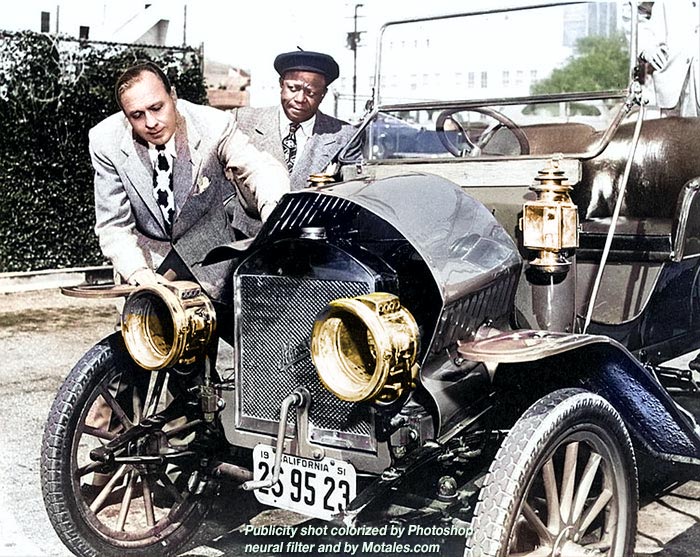Jack Benny, a vaudeville master of ceremonies with a suave manner and self-deprecating jokes, went on the radio in 1932 radio show. He was to become a legend, inspiring Johnny Carson, other comedians, and at least one Shakespearean actor.
Benny used all his existing material within weeks and hired Harry Conn to write more. Conn went from self-deprecating jokes to Benny being mocked by a full cast, and eventually wrote in a car to match Jack’s new image—something clearly outdated, worthless, and obsolete.

It was a 1907 Maxwell—one of the original Maxwells, with lanterns rather than headlights, from the brass era. It did have a steering wheel and driveshaft, but was clearly obsolete. The radio-show car was a broken-down wreck—introduced around 1933—meant to emphasize that Jack was cheap. It had also been a mass-market car, a four-cylinder, rather than a premium model.
Maxwell itself, formed in 1904, went through many changes before its final cars, made in 1925; these were upgraded and sold as the 1926-27 “Chrysler Four” and then upgraded again to be the “new” Plymouth.
The Maxwell, not sold since 1925, was ideal for this role in the 1930s. This story at Motales has more details on the Jack Benny Maxwell—and how Maxwell became Chrysler; and part of a sample script from Arthur Frank Wertheim’s book Radio Comedy (1979, Oxford University Press).
As for the Maxwell, there was originally no actual car. A phonograph record was made for the sound effects of its motor, but no phonograph was available in the studio. Mel Blanc, there for another role, volunteered to take its place, doing a creditable job and making the Maxwell (still played by Mel Blanc) a regular feature.
An actual Maxwell was needed when Jack Benny moved to the silver screen; it was kept on for his television program.
Original Chrysler-Maxwell-Jack Benny story.
Discover more from Stellpower - that Mopar news site
Subscribe to get the latest posts sent to your email.